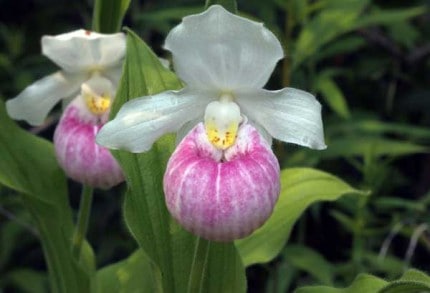
(Chelsea Update would like to thank Tom Hodgson and the Waterloo Natural History Association for the information and photos in this column.)
Once again it was time for me to pay homage to the showy lady’s slipper, one of Michigan’s most beautiful and impressive wildflowers.
It is fitting that the scientific species name for the showy lady’s slipper is reginae, which means queen in Latin. This stately wildflower is certainly fit for a queen. Growing up to 3-feet tall, it sports the largest blossoms of any native North American orchid.
Showy is an accurate description for the blossoms as each is adorned with bright white petals and a deep red pouch or “slipper.”
In Michigan, showy lady’s slipper is confined to wetland habitats where it may grow in the open or partially shaded by trees and shrubs. Though never common, this orchid was once widespread in suitable habitat throughout the mid-western and north eastern U.S. and Canada.Unfortunately, it is now considered rare or endangered over much of its original range; a victim of habitat loss, collecting, and an expanding deer population.
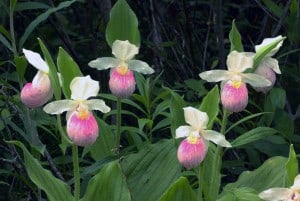
One of the largest, local populations grows along the marshy borders of Mill Lake in the Waterloo Recreation Area. The blossoms are at their best between June 6-16 in most years. Because Mill Lake is completely surrounded by public land its natural shoreline will remain forever unchanged, and these beautiful orchids will always have a home.
Needless to say these plants should be left where they are found as they do not transplant well. Picking or removing wildflowers from public lands is strictly prohibited. It takes about 15 years for showy lady’s slippers to produce blossoms. However, individual plants may survive 50 years in the wild if left undisturbed.
Those who ignore the law and pick these rare plants may get their just desserts. The glandular hairs that cover their stems and leaves produce a toxic substance that will produce a poison ivy-like rash that may leave pickers in misery for many days. That’s another reason to “take only pictures and leave only footprints.”
There are no trails leading to these orchids, so one must bush whack through marshy ground to find them. For those who do not wish to expose themselves to poison ivy, poison sumac, mosquitoes and wood ticks to see these flowers in person, there is a slide show at the end of this article filled with new images just taken this week.
Even if you never go out to see them, it’s nice to know that such beauty does exist and is being protected for posterity.





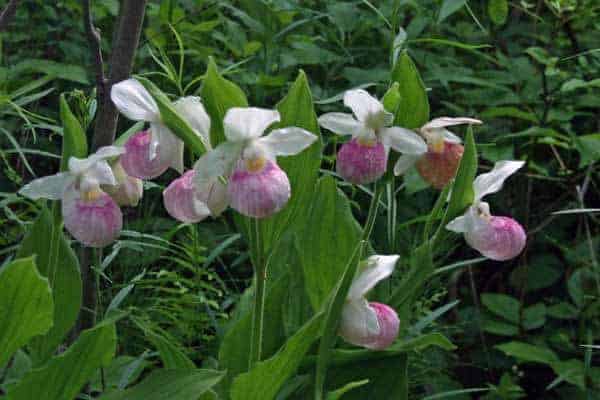
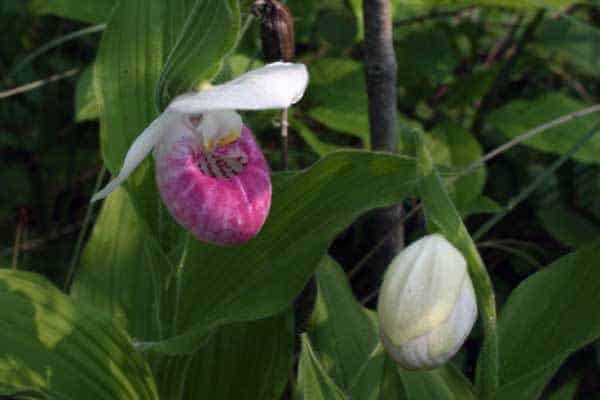
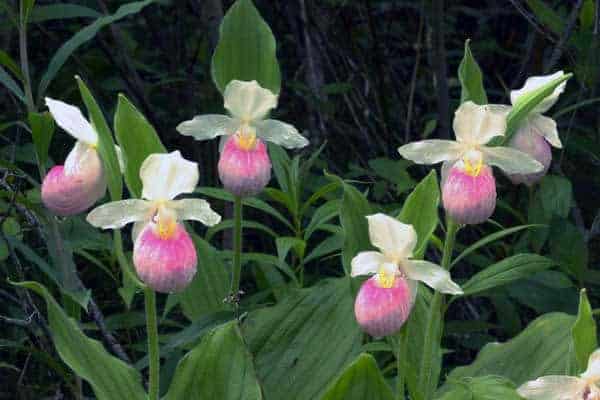
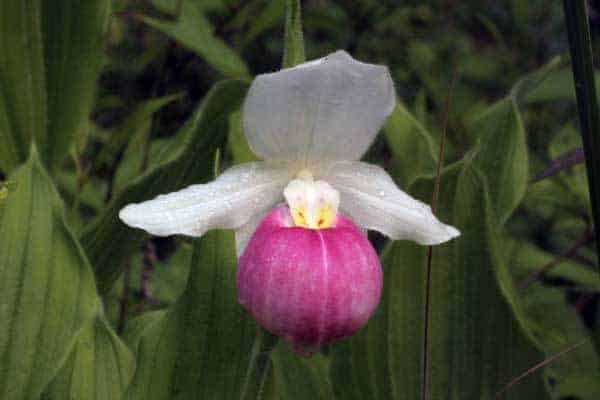







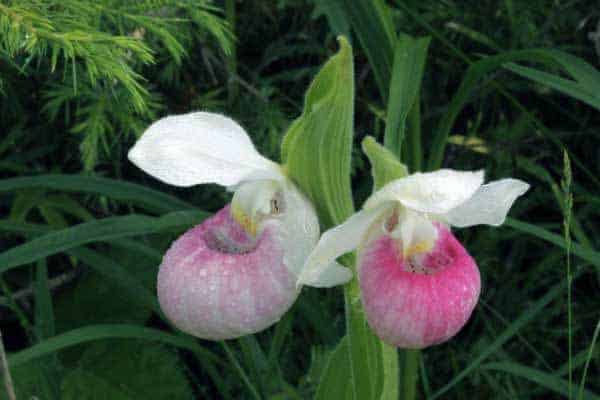







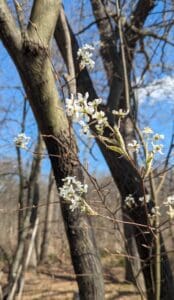



Thank you, Tom, for this beautiful slide show of this remarkable orchid. It was most enjoyable!